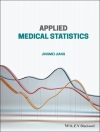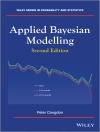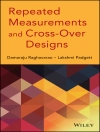This volume presents state of the art theories, new developments, and important applications of Partial Least Square (PLS) methods. The text begins with the invited communications of current leaders in the field who cover the history of PLS, an overview of methodological issues, and recent advances in regression and multi-block approaches. The rest of the volume comprises selected, reviewed contributions from the 8th International Conference on Partial Least Squares and Related Methods held in Paris, France, on 26-28 May, 2014. They are organized in four coherent sections: 1) new developments in genomics and brain imaging, 2) new and alternative methods for multi-table and path analysis, 3) advances in partial least square regression (PLSR), and 4) partial least square path modeling (PLS-PM) breakthroughs and applications. PLS methods are very versatile methods that are now used in areas as diverse as engineering, life science, sociology, psychology, brain imaging, genomics, andbusiness among both academics and practitioners. The selected chapters here highlight this diversity with applied examples as well as the most recent advances.
สารบัญ
1. Partial Last Squares for Heterogeneous Data.- 2. On the PLS Algorithm for Multiple Regression (PLS1).- 3. Extending the Finite Iterative Method for Computing the Covariance Matrix Implied by a Recursive Path Model.- 4. Which Resampling-Based Error Estimator for Benchmark Studies? A Power Analysis with Application to PLS-LDA.- 5. Path Directions Incoherence in PLS Path Modeling: A Prediction-Oriented Solution.- 6. Imaging Genetics with Partial Least Squares for Mixed-Data Types (Mi Mo PLS).- 7. PLS and Functional Neuroimaging: Bias and Detection Power Across Different Resampling Schemes.- 8. Estimating and Correcting Optimism Bias in Multivariate PLS Regression: Application to the Study of the Association Between Single Nucleotide Polymorphisms and Multivariate Traits in Attention Deficit Hyperactivity Disorder.- 9. Discriminant Analysis for Multiway Data.- 10. Structured Variable Selection for Regularized Generalized Canonical Correlation Analysis.- 11. Supervised Component Generalized Linear Regression with Multiple Explanatory Blocks: THEME-SCGLR.- 12. Partial Possibilistic Regression Path Modeling.- 13. Assessment and Validation in Quantile Composite-Based Path Modeling.- 14. PLS-Frailty Model for Cancer Survival Analysis Based on Gene Expression Profiles.- 15. Functional Linear Regression Analysis Based on Partial Least Squares and Its Application.- 16. Multiblock and Multigroup PLS Application to Study Cannabis Consumption in Thirteen European Countries.- 17. A Unified Framework to Study the Properties of the PLS Vector of Regression Coefficients.- 18. A New Bootstrap-Based Stopping Criterion in PLS Components Construction.- 19. Extension to the PATHMOX Approach to Detect which Constructs Differentiate Segments and to Test Factor Invariance: Application to Mental Health Data.- 20. Multi-Group Invariance Testing: An Illustrative Comparison of PLS Permutation and Covariance-Based SEM Invariance Analysis.- 21. Brand Nostalgia and Consumers’ Relationships to Luxury Brands: A Continuous and Categorical Moderated Mediation Approach.- 22. A Partial Least Squares Algorithm Handling Ordinal Variables.
เกี่ยวกับผู้แต่ง
Hervé Abdi—a former Fulbright scholar and resident of the Paris Institute for Advanced Studies—is professor of cognitive neuroscience at the University of Texas at Dallas. His recent research interests focus on the development of analytical and statistical tools for the analysis of very large data sets as generated, for example, by brain imaging, genetic, genomic, and sensory science research. In addition to Partial Least Squares (PLS) models, he is also particularly interested in variable selection and in multi-modal, multi-way, and multi-block methods. He is the author of more than 250 publications (including 12 books) in these domains.
Vincenzo Esposito Vinzi—a former President of the International Society for Business and Industrial Statistics (ISBIS)—is professor of statistics and Dean of the Faculty at the ESSEC Business School in Paris and Singapore. His research interests focus mainly on methodological developments in multivariate statistics, namelyfactorial methods, structural equation modeling, PLS regression, and predictive path modeling that are relevant to various applications in business and industry, sensory data, social surveys, and the measurement of customer satisfaction for commodities and public services.
Giorgio Russolillo is associate professor of statistics at the Conservatoire National des Arts et Métiers (CNAM) of Paris where he is a member of the CEDRIC research group. His research interests involve multivariate data analysis models and methods applied to social and life sciences. Much of his current research focuses on PLS algorithms.
Gilbert Saporta—a former president of the International Association for Statistical Computing—is emeritus professor of applied statistics at the Conservatoire National des Arts et Métiers (CNAM) of Paris. His research interests are in exploratory multivariate analysis: functional data analysis including functional PLS, sparse methods, and supervised classification.
Laura Trinchera is assistant professor of computational statistics at the NEOMA business school (Rouen Campus, France). Her research interests cover multivariate analyses, structural equation models (SEM), PLS methods. She is also interested in variable selection in regression models.












